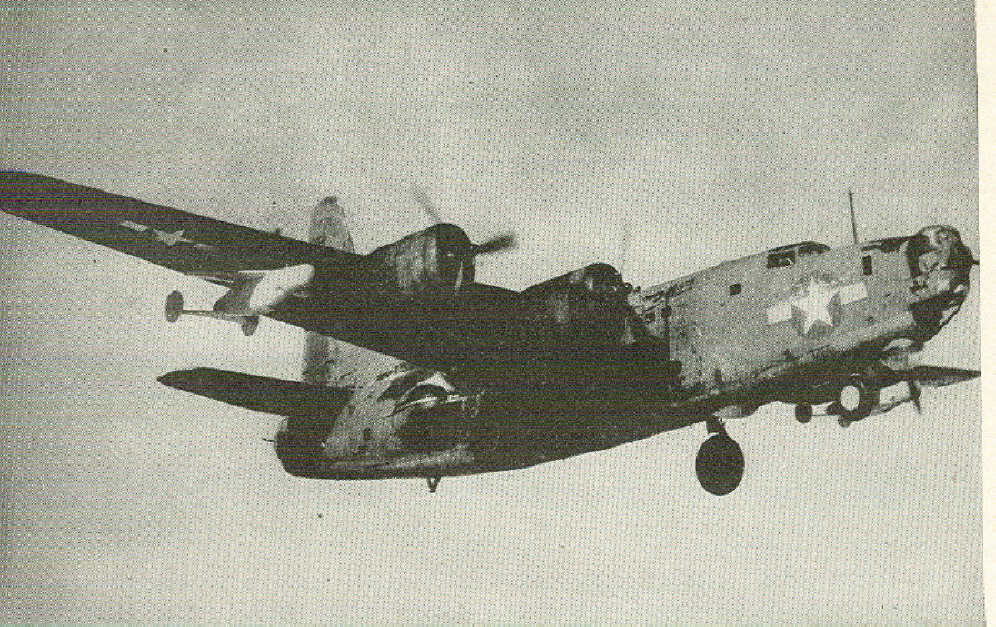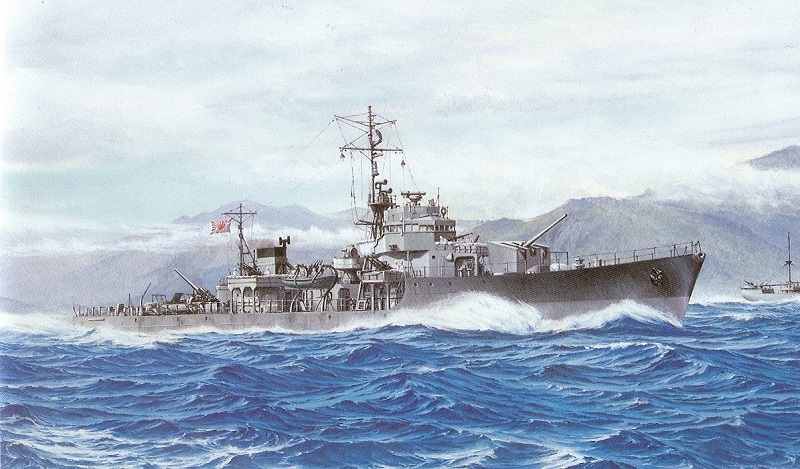© 2006-2019 Bob Hackett, Sander Kingsepp and Peter Cundall
Revision 5
15 February 1944:
Tsurumi. Laid down at Nihon Kokan K. K.’s shipyard.
21 September 1944:
Launched and named AGUNI.
2 December 1944:
Completed and registered in the Kure Naval District. Attached to the Kure Guard Unit at Tsurumi. LtCdr (reserve) Higai Toshio is the Commanding Officer.
17 January 1945:
Assigned to the General Escort Command’s First Surface Escort Division.
20 January 1945:
Departs unknown location.
21 January 1945:
At 1200 arrives at Tokuyama.
22 January 1945:
At 1700 AGUNI departs Moji with kaibokan CD-17 and minelayer NIIZAKI escorting convoy MOHO-01 consisting of SHINTON and TAIKYU MARUs and two unidentified merchant ships.
23 January 1945:
Arrives at Jinsen.
24 January 1945:
At 0600 departs Jinsen.
2 February 1945:
At 1030 arrives at Hong Kong.
3 February 1945:
At 1700 CD-18 and kaibokan CD-9 and AGUNI depart Hong Kong escorting convoy HOMO-01 consisting of HASHIDATE MARU and four unidentified merchant ships.
5 February 1945:
At 2100 arrives at Nanao Tao.
6 February 1945:
At 0600 departs Nanao Tao.
9 February 1945:
At 2400 arrives at Heiniu Wan. CD-9 has apparently detached for Takao.
10 February 1945:
At 0700 departs Heiniu Wan. CD-18 apparently detaches at this point.
14 February 1945:
At 1630 arrives at Shanghai escorting tanker HASHIDATE MARU.
15 February 1945:
At 0100 departs Shanghai.
16 February 1945:
At 1930 arrives at Mazu Tao.
17 February 1945:
At 0600 departs Mazu Tao and at 2000 arrives at Jieshi Wan.
18 February 1945:
At 0730 departs Jieshi Wan and at 1500 arrives at Hong Kong.
20 February 1945:
At 1600 AGUNI departs Hong Kong with kaibokan CD-40 escorting convoy HOMO-02 consisting of MEISEI and TENSHO MARUs and five unidentified merchant ships.
3 March 1945:
At 1955 arrives at Moji escorting MEISEI MARU from the convoy.
4 March 1945:
At 0720 AGUNI departs Moji with kaibokan OKINAWA and CD-39 escorting the “Kitsurin Maru” convoy consisting only of KITSURIN MARU.
6 March 1945:
At 1400 arrives at Ssu Chiao Shan and later that day KITSURIN MARU arrives at Shanghai.
8 March 1945:
At 0900 AGUNI departs Ssu Chiao Shan and heads south and eventually joins HI-96 convoy consisting of tanker FUJISAN MARU escorted by kaibokan INAGI and CD-81
10 March 1945:
Arrives at Ssu Chiao Shan (Shushan Island) at 1000.
11 March 1945:
Departs Ssu Chiao Shan (Shushan Island) at 0900. At 2000 arrives at Sinjin Do (Shinchi Do), Chosen.
12 March 1945:
At 0600 departs Sinjin Do and at 1800 arrives at Katoku Suido.
13 March 1945:
At 0500 departs Katoku Suido. At 1810, arrives at Moji.
18 March 1945:
Departs Moji and at 1140 arrives at Mutsure.
14 April 1945:
AGUNI and CD-104 are despatched to 33-25N 126-15 to rescue survivors of JUZAN MARU, NOMI and CD-31 all sunk by USS TIRANTE that had practically destroyed convoy MOSHI-02. Between them they rescue 87 survivors from NOMI, 166 from CD-31 and 164 from JUZAN MARU.
21 April 1945:
Escorts convoys in the Tsushima Sea and the Sea of Japan.
25 April 1945:
Reassigned to the General Escort Command’s First Escort Fleet's 31st Coast
Defense Group.
27 May 1945:
Korea Strait, off Geomundo Island. AGUNI and kaibokan OKINAWA are attacked by two Consolidated PB4Y-2B "Privateers" piloted by Lt Leo E. Kennedy and LtCdr (later Rear Admiral, USNR-Ret) George L. Hicks of Patrol Bombing Squadron VPB-109 based at Yontan, Okinawa.
Kennedy launches a Mark-9, Mod 0, Special Weapon Ordnance Device (SWOD) radar-guided “Bat” glide bomb from a long distance. The bomb's 1,000-lb warhead explodes off AGUNI’s starboard bow demolishing the whole foredeck area ahead of the bridge and killing 2 officers and 32 sailors, with one sailor severely wounded. After being hit, AGUNI's crew have to cut her anchor chain to free her. Kaibokan CD-12 is dispatched to assist OKINAWA in rescuing AGUNI’s crew, but despite the heavy damage the kaibokan remains navigable and proceeds stern first to Pusan, Korea on her own power. [1]
June-August 1945:
Pusan. AGUNI undergoes repairs at Chosen Heavy Industries' shipyard until the end of war.
15 August 1945:
Pusan. AGUNI's crew is notified of the termination of the war.
30 November 1945:
Removed from the Navy List.
20 May 1948:
Scrapped at Iino Kaiun K. K's Yard (former Maizuru Navy Yard).
Authors' Note:
[1] The account of the “Bat” attack is based largely on Kimata Jiro’s 1994 Nippon Kaibokan Senshi ("Battle History of Japanese Kaibokan Frigates"). Contrary to some reports by USN personnel, the "destroyer" (sic) (AGUNI) did not sink. Other sources attribute AGUNI’s damage to a mine. In fact, the Japanese characters for "mine" and "guided bomb" can be confused, but the damage itself supports a bomb or missile attack since there was no underwater damage. Only the foredeck was dished in. Moreover, AGUNI's sailors identified the weapon as a "miniature aircraft".

 (USN Photos)
(USN Photos)
In the same attack, using conventional bombs, Kennedy sank 882-ton 2E type freighter DAITO MARU No. 2 and four smaller freighters and damaged two small vessels. For this action Kennedy was awarded the Navy Cross, but he was KIA three days later by AA fire while making a conventional attack off the Yangtze River, China.
Thanks go to Dr. Higuchi Tatsuhiro of Japan. Thanks also go to Jeff Donahoo of Iowa and Matthew Jones of Missisippi for help in identifying kaibokan COs, to Jim Sawruk on 27 May 45 casualties and to Gilbert Casse of France.
-Bob Hackett, Sander Kingsepp and Peter Cundall
Back to
Escort Page





